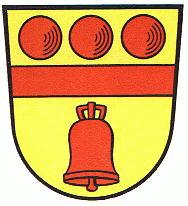Lüdinghausen (kreis): Difference between revisions
Jump to navigation
Jump to search
Knorrepoes (talk | contribs) m (Text replace - "'''Origin/meaning :'''<br/>" to "====Origin/meaning====") |
Knorrepoes (talk | contribs) m (Text replace - "|width="15%"|50 px|right |} " to "|width="15%"|50 px|right |}<seo title="Wappen, Gemeindewappen" /> ") |
||
| Line 3: | Line 3: | ||
|width="70%" align="center" |'''Heraldry of the World<br/>Civic heraldry of [[Germany]] - [[Deutsche Wappen|Deutsche Wappen (Gemeindewappen/Kreiswappen)]]''' | |width="70%" align="center" |'''Heraldry of the World<br/>Civic heraldry of [[Germany]] - [[Deutsche Wappen|Deutsche Wappen (Gemeindewappen/Kreiswappen)]]''' | ||
|width="15%"|[[File:Germany.jpg|50 px|right]] | |width="15%"|[[File:Germany.jpg|50 px|right]] | ||
|} | |}<seo title="Wappen, Gemeindewappen" /> | ||
'''LÜDINGHAUSEN (LH)''' | '''LÜDINGHAUSEN (LH)''' | ||
Revision as of 19:19, 5 November 2012
| Heraldry of the World Civic heraldry of Germany - Deutsche Wappen (Gemeindewappen/Kreiswappen) |
LÜDINGHAUSEN (LH)
State : Nordrhein-Westfalen
Incorporated into : 1974 Coesfeld
Origin/meaning
The arms were granted on May 30, 1939.
The main part of the arms shows the red bar in gold, the arms of the State and Bishops of Münster. From 1509-1802 the district belonged to the State of Münster. The balls in the upper part of the arms are derived from the arms of the Lords of Davensberg, who, in the 14th century, held several estates in the district. The bell is derived from the arms of the city of Lüdinghausen.
Literature : Stadler, K. : Deutsche Wappen - Bundesrepublik Deutschland. Angelsachsen Verlag, 1964-1971, 8 volumes.

